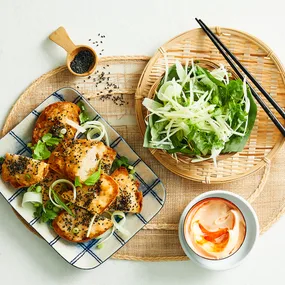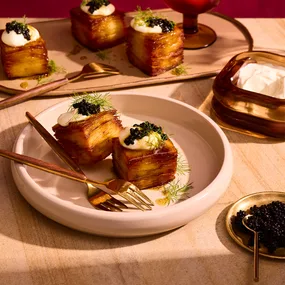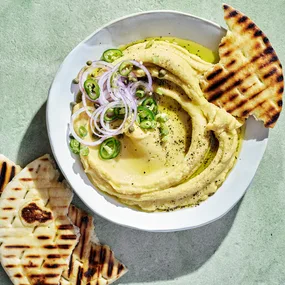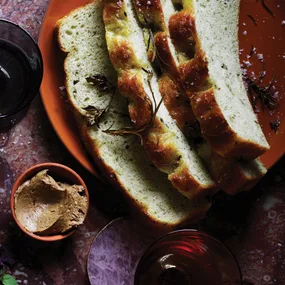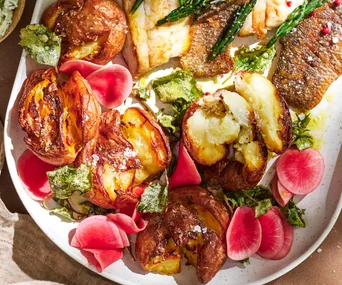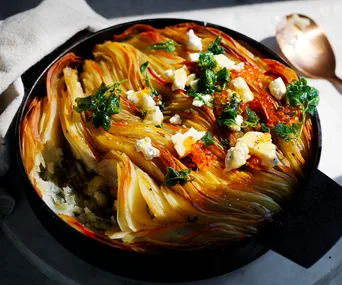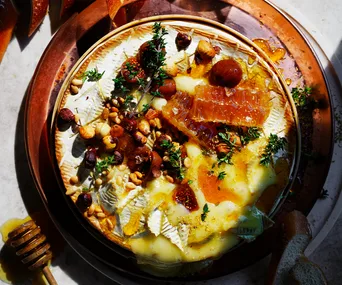Even intrepid cooks can fear the flop of soufflés but with this more forgiving variety you will rise to the challenge. Damien Pignolet has the secrets to success.
Even intrepid cooks can fear the flop of soufflés but with this more forgiving variety you will rise to the challenge. Damien Pignolet has the secrets to success.
The celebrated soufflé was ostensibly invented by famous 18th-century chef Marie-Antoine Carême, who became the first superstar international chef to kings. Another 18th-century chef, Beauvilliers, was making soufflés in the late 1700s, but his were notorious for collapsing. It was Carême who found the secret of success, though I wonder if the ovens of the day may have been the problem. At any rate, today the mystique of soufflé-making still excites wonderment.
Soufflés come in several varieties: the classic hovering above a straight-sided dish, the twice-baked variety I make here, fluffy omelette soufflés and mixtures sandwiched within crêpes. They can be savoury or sweet, hot or cold as well as chilled and frozen.
I have a real passion for making soufflés. At Claude’s we always served the soufflé à la Suissesse (a double-baked Gruyère soufflé) and a wide range of dessert soufflés, the most famous flavoured with pear eau de vie. I recall with pleasure the fun and challenge of making 40 raspberry omelette soufflés for one of our Soirées de la Fine Bouche dinners and flaming them with raspberry eau de vie.
A soufflé, which means “puffed up”, needs a substantial base, often made with flour or cornflour in a custard or purée of savoury or sweet food, often enriched with egg yolks to support the structure and provide richness. Lightness comes from stiffly beaten eggwhites (or a light meringue for sweet versions) folded into the base.
Double-baking soufflés takes some of the trickiness out of the dish. These soufflés are more forgiving and, after the first baking, they can be stored in the fridge in their moulds for up to two days, after which you simply follow the step for the second cooking. Apart from the ease of serving, this sturdier soufflé lends itself to endless flavour options, ranging from vegetables such as zucchini and spinach to chicken and leek, crab, scallop and lobster, as well as the special Valrhona chocolate soufflé I have in my book French. My soufflé Les Halles here, similar to the many I made at Bistro Moncur during my 19 years there, honours the onion soup served in small restaurants close to Paris’s famed produce market of that name. Essentially it’s onion soup cast in a new role. The Gruyère de Comté marries with the caramelised onions for a fantastic bolt of flavour and an intoxicating aroma.
Savoury soufflés usually call for a béchamel or velouté sauce base, the latter using both milk and stock, enriched with egg yolks, and sometimes with a vegetable purée as the foundation. Those destined for a second cooking rely on the sauce being thicker – the base should be as firm as a starchy potato purée so it holds more eggwhites than are used in other types. The second baking demands a sauce such as a tomato coulis with cream or simply pouring cream.
Most important for all soufflés is the texture of the beaten eggwhite – it needs to be beaten to firm but not dry peaks. Old-timer chefs would pride themselves on holding the bowl over their heads to prove the firmness of the whites; I suggest leaving this to them. It’s critical that the bowl is spotlessly clean and dry, and the whites untainted by even the tiniest spot of yolk, which destroys the development of the whites. Whisking them in a copper bowl with a large wire whisk is considered the best way to get voluminous eggwhites – a chemical reaction occurs between the copper and the albumen of the white that stabilises the beaten result and, surprisingly, if left half-beaten it will return to a smooth texture when whipped again.
If you don’t have a copper bowl, a little helper comes in the form of cream of tartar, which encourages stability; don’t halt the beating, though or some of the airiness may be lost.
When it comes to folding, I like to cut into the centre of the base and turn the mixture over with a large spatula or big kitchen spoon; at the same time, rotating the bowl produces a smooth texture quicker. Part of the successful folding technique relies on beating some of the stiff whites into the base to lighten it, then turning this mixture onto the remaining beaten whites and folding thoroughly. If the soufflé involves diced cheese or another solids, scatter them over the remaining beaten whites, then pour the lightened base over and fold them together.
The moulds for the first baking should be buttered and dusted with flour (or sugar for sweet versions). This is very important – it allows the mixture to rise smoothly; it also helps to brush the butter on in an upward direction. Preparing the dishes is the first step. And if the soufflés are to be cooked in a bain-marie, be sure to have the baking dish on the bench and the kettle close to boiling so your soufflés don’t suffer from sitting about; the rule is fold, fill and bake immediately.
There should be no trickiness to worry about other than choosing a mould for the first cooking that has a rounded internal base. The best dishes for the second cooking are individual ceramic gratin dishes with handles or “ears” as they are called in France, making the removal of the hot dish safer.
All that remains is to enjoy. From the first vanilla soufflés I baked as a 16-year-old, soufflés for me remain a magical treat, as I trust they will for you today.
Ingredients
Method
Main
Note For reduced stock, simmer 260ml beef stock until reduced by half. For vinaigrette, shake 1 part walnut or hazelnut oil, 2 parts neutral vegetable oil, 1-1½ parts cider or aged Sherry vinegar, a scrap of bruised garlic and salt and freshly ground white pepper in a screw-top jar, leave to infuse for 15 minutes, then remove the garlic.
Notes

